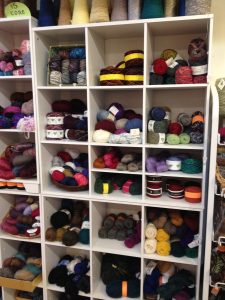I have always taken an interest in sewing, knitting and crocheting but have always been afraid to walk into the little shops that seem to pop up in little towns. Going on the tour at Sew Green made me realize that these are the places that I should be going to, not the giant stores like Michael’s. The idea of collecting fabric scraps or yards of fabric that were once forgotten sounds rather simple. After the tour, I realized there was so much work that went into this practice, from collecting the fabrics to sorting and cleaning them, it was clear that those who are involved at Sew Green have a passion for what they do. The idea of all the beautiful fabrics just being thrown to the dumpster is disheartening, not only because it is going to waste but also because many fabrics are not made under sustainable practices and throwing out what was unused means more is being made in its place.
I love the idea of this non-profit and it is definitely the type of thing that I would expect to find in Ithaca. The idea of sewing classes for all ages, with the first being free was one of the things that I found to be a great opportunity. Most of what I know about sewing or knitting or crocheting I learned by myself from YouTube videos or books. Now that I know of this amazing place, I may just take advantage of all they have to offer.

